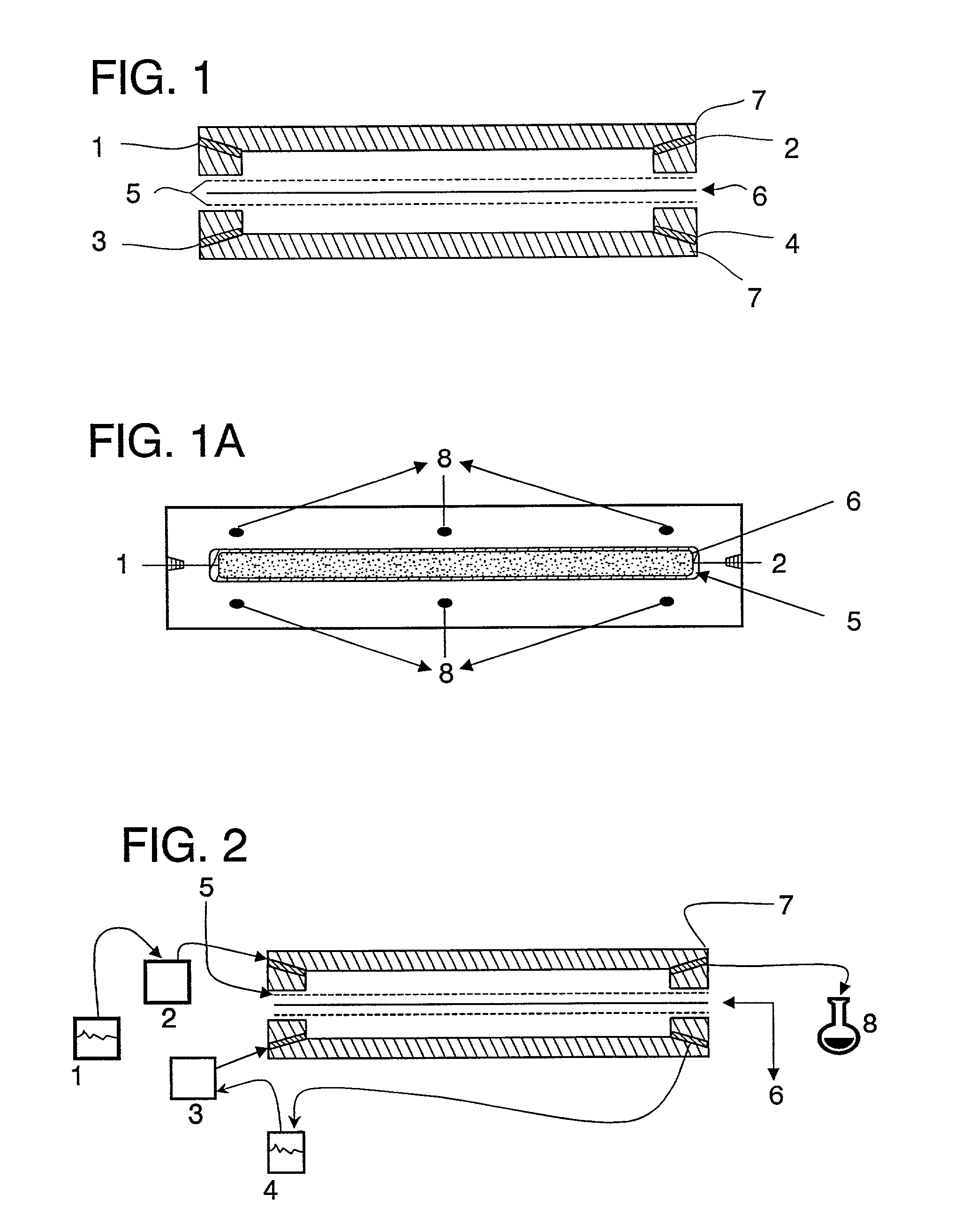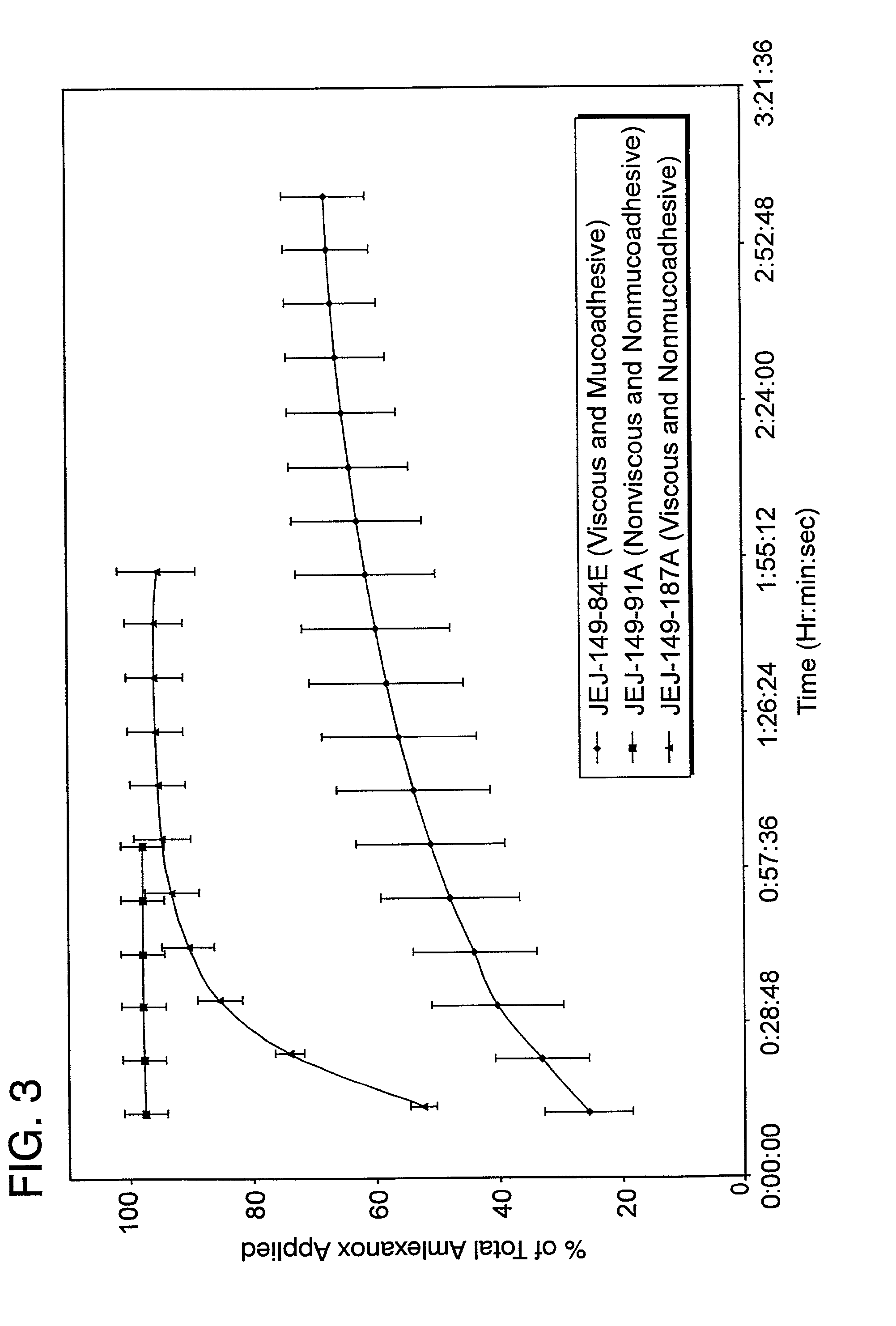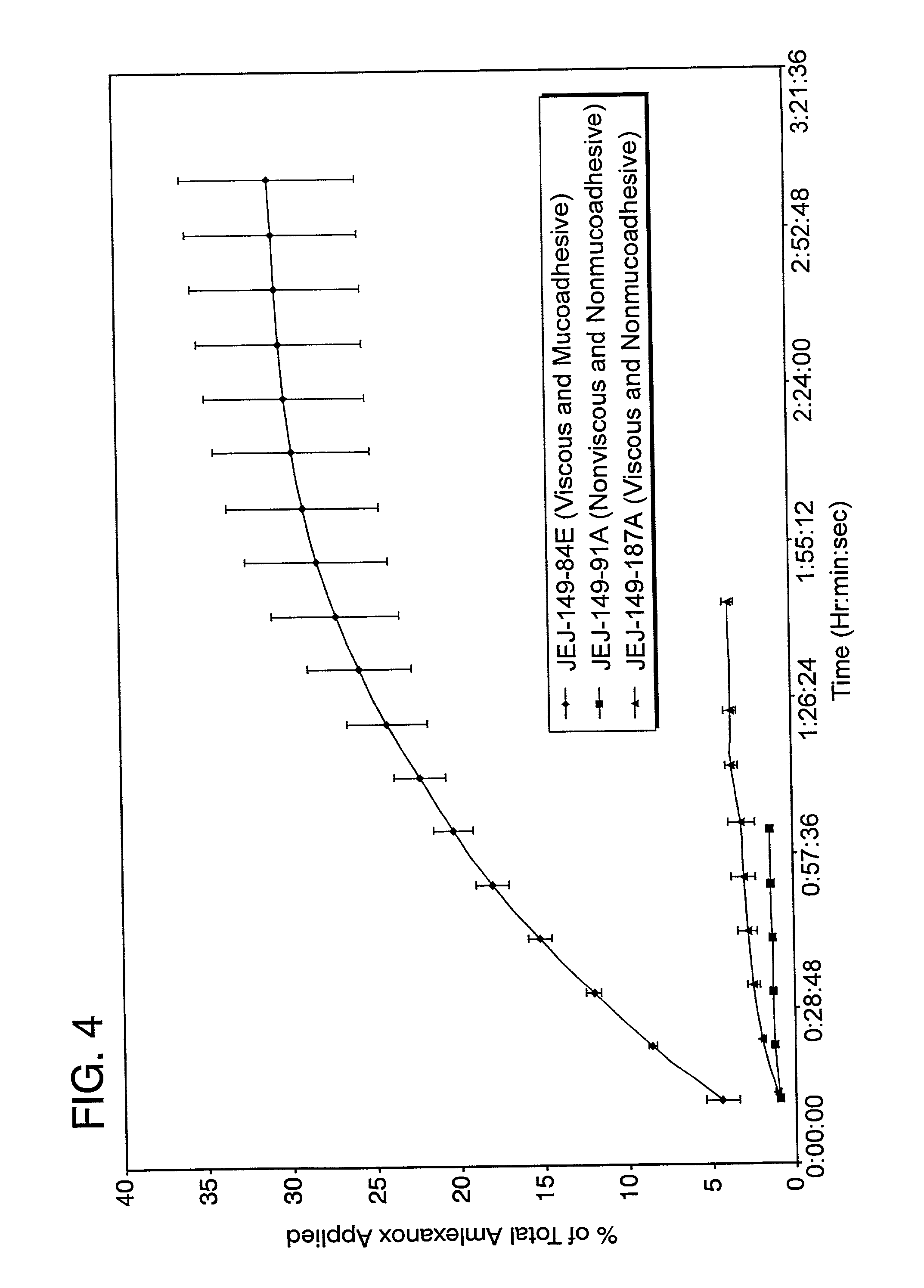Liquid formulations for the prevention and treatment of mucosal diseases and disorders
a technology for mucosal diseases and liquid formulations, applied in the direction of medical preparations, drug compositions, dentistry, etc., can solve the problems of limiting the long-term use of the drug at the therapeutic dose, urinary tract toxicity, and severe pain
- Summary
- Abstract
- Description
- Claims
- Application Information
AI Technical Summary
Problems solved by technology
Method used
Image
Examples
example 1
Preparation of Viscous, Mucoadhesive Aqueous Composition
[0127] A viscous, mucoadhesive aqueous solution was formulated by adding Carbopol.RTM. 971P NF to water using an appropriate mixing apparatus (Master Servodyne.RTM. mixer with high-lift blade rotating at 200-300 rpm) to give a clear solution. An aqueous solution of potassium hydroxide was added with stirring to give a clear gel. An aqueous solution of potassium hydroxide, citric acid, saccharin sodium, phosphoric acid and glycerin was added with stirring to give a clear solution. A solution of benzyl alcohol and polysorbate 60 was added with stirring to give a clear solution. The pH was adjusted to 7.0-7.8 with an aqueous solution of phosphoric acid. The resulting product was mixed further for 30 minutes.
[0128] The formulation of the product is set out, below in Table 1:
1 TABLE 1 Ingredients Weight Percent purified water 90.68 10% potassium hydroxide c.a. 4.6 benzyl alcohol 1.50 polysorbate 60 0.05 Carbopol .RTM. 971P 0.35 0.5%...
example 2
Preparation of Viscous, Mucoadhesive Aqueous Composition Containing Amlexanox
[0129] The method set out in Example 1 was followed to provide a viscous, mucoadhesive aqueous composition of the following formula shown in Table 2:
2 TABLE 2 Ingredients Weight Percent purified water 91.21 potassium hydroxide 0.60 benzyl alcohol 1.50 polysorbate 60 0.05 Carbopol .RTM. 971P 0.35 phosphoric acid 0.13 citric acid 0.05 saccharin sodium 0.40 amlexanox 0.50 Glycerin 5.20
example 3
High Performance Liquid Chromatographic Assay for the Amlexanox
[0130] The following HPLC parameters were employed in performing an assaying for amlexanox:
[0131] Phenomenex, Prodigy, 5 .phi.m ODS (2), 150 mm.times.4.6 mm
[0132] Mobile Phase: 25% THF / 75% 10 mM phosphate buffer, pH 8.0
[0133] Flow Rate: 1.0 mL / min
[0134] Injection Volume: 10 .phi.L
[0135] Detector: UV@244 nm
PUM
| Property | Measurement | Unit |
|---|---|---|
| diameter | aaaaa | aaaaa |
| diameter | aaaaa | aaaaa |
| diameter | aaaaa | aaaaa |
Abstract
Description
Claims
Application Information
 Login to View More
Login to View More - R&D
- Intellectual Property
- Life Sciences
- Materials
- Tech Scout
- Unparalleled Data Quality
- Higher Quality Content
- 60% Fewer Hallucinations
Browse by: Latest US Patents, China's latest patents, Technical Efficacy Thesaurus, Application Domain, Technology Topic, Popular Technical Reports.
© 2025 PatSnap. All rights reserved.Legal|Privacy policy|Modern Slavery Act Transparency Statement|Sitemap|About US| Contact US: help@patsnap.com



